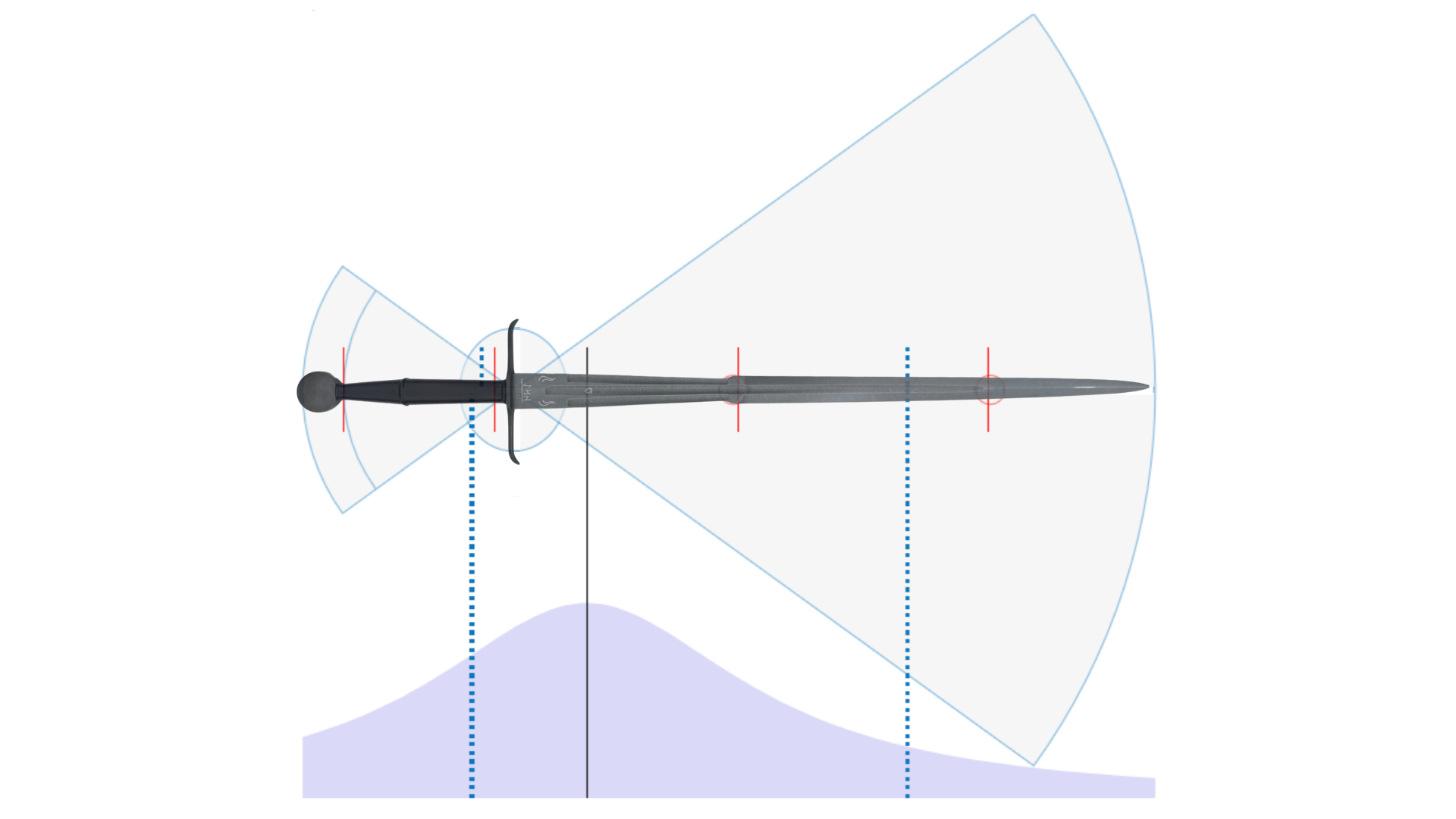The central fuller on Qara Longsword is accompanied by two short fullers on its either side. The side fullers stop where the recurve and elongated ricasso comes to an end in the bottom third of the blade.
The side and central fullers followed by the flattened diamond cross-section of Qara Longsword is inspired by Oakeshott Type XXa longswords that allow for effective cut & thrust practices.
The elongated ricasso reinforced by the fullers and recurve spines on either side ensures that the blade has a rigid structure in its bottom half. The blade flex mostly takes place in the second half. With its though structure, Qara Longsword is an ideal blade for thrusting practices.
The recurve spines along the ricasso widen and turn into sharp edges. The transition from the ricasso into sharp edges is inspired by the mahmuz (hammer) section of yalman in Turkish kilij. This transition provides a smooth geometry and a solid base for the cutting portion of the blade. The recurve spines and the transition into a wider blade profile present the benefits of a leaf-blade profile. The blade profile of Qara Longsword optimizes cutting practices: the percussion point (vibration node) and the forward pivot point are proportionately closer to each other than those in other longsword profiles.
The last fourth of the blade transitions from a central fuller into a flattened diamond cross section, optimizing thrusting practices with a strong point.
Qara Longsword with its special design will significantly improve your cut & thrust practices in historical European sword arts.







